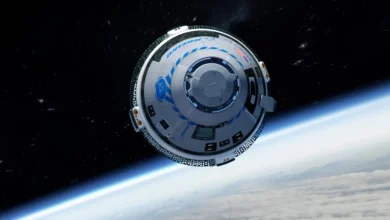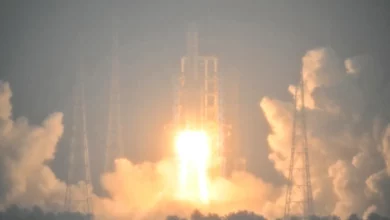
Kennedy Space Center, Florida (CNN) – Before landing the first humans on Mars, NASA wants to return to the lunar surface — but in a way that we’ve never explored the moon before.
When the uncrewed Artemis I mission launches on Monday, August 29, it’s just the first step toward the future of space exploration.
The last crewed landing on the moon, Apollo 17, was nearly 50 years ago. The final Apollo mission’s record for the longest crewed deep space flight still stands: 12.5 days.
Through the Artemis program, which aims to land humans at the unexplored lunar south pole and eventually on Mars, astronauts will go on long-duration deep space missions that test all of the bounds of exploration.
“We’re going back to the moon in order to learn to live, to work, to survive,” said NASA administrator Bill Nelson during a news conference earlier this month.
“How do you keep humans alive in those hostile conditions? And we’re going to learn how to use the resources on the moon in order to be able to build things in the future as we go — not a quarter of a million miles away, not a three-day journey — but millions and millions of miles away on a months and months if not years-long journey.”
NASA astronaut Randy Bresnik discussed the importance of using lunar exploration as a way to prepare for landing on Mars during a NASA briefing on Saturday.
When camping in the Alaskan wilderness, you wouldn’t just rely on new gear and shoes that haven’t been broken in yet, he said. Mars isn’t the place to test out new gear for the first time, either.
“We’re gonna go to some local places a little closer first,” Bresnik said. “Then you can come back home if your if your shoelaces break or something like that.”
Astronauts have lived and worked aboard the International Space Station, which circles about 254 miles above the planet in low-Earth orbit, for more than 20 years. Their experiences, which can last between six months to nearly a year, have revealed how the microgravity environment affects the human body.
“Every day that I personally spent on the space station, I looked at it as walking on Mars,” said NASA astronaut Reid Wiseman, Chief of the Astronaut Office at Johnson Space Center in Houston. “That is why we’re up there. We’re trying to make life better on Earth and we’re trying to expand humanity into our solar system.”
On Artemis II, scheduled for 2024, astronauts will follow a similar path as Artemis I — circling the moon at a wider distance than any of the Apollo missions. Artemis III, slated for late 2025, will land the first woman and the next man at the moon’s south pole, where permanently shadowed regions may harbor ice and other resources that could sustain astronauts during long moonwalks.
“Our moon serves as basically a celestial library right next door,” said Jacob Bleacher, NASA’s chief exploration scientist. “Lunar rocks and lunar ice basically serve as the books of this library. We can use them to begin to reveal how the solar system has evolved. This can really help us gain insight into what was happening here on Earth when life was establishing a foothold in the solar system.”
The Artemis program involves establishing a sustained human presence on the moon and putting an orbiting lunar outpost called the Gateway in place.
“We want to stay on the lunar surface and learn on the lunar surface so that we can get the most science and know how we’re going to go to Mars,” said Jim Free, associate administrator for NASA’s Exploration Systems Development Mission Directorate. “On Apollo, we did incredible science at the equator. This time, we’re going to the South Pole.”
Over time, the SLS rocket will evolve, Nelson said. By the time the Artemis IV mission rolls to the launchpad later this decade to dock with the Gateway, the rocket will be taller and even more powerful than the version used for Artemis I.
Artemis I is a test mission, Nelson stressed. It serves as the inaugural flight of the Space Launch System Rocket, the Orion spacecraft and its heat shield, as well as protective gear for future astronauts and measuring radiation exposure.
A series of science experiments and technology demonstrations inside Orion and flying outside of it on small satellites called CubeSats, will gather additional data about the space environment future Artemis astronauts will face.
The lessons learned from Artemis I, which will be collected when it splashes down in October, could inform the next steps of the Artemis program.
Currently, the first five Artemis missions have been planned, and NASA is working on laying out the details for missions six through ten, Free said.
Teams at NASA are “going through the broad exploration objectives and then narrowing down to an architecture which takes us out to Mars,” Free said. “We’re looking at rolling through that architecture, decisions and process in the early part of next year.”
The goal of landing humans on Mars by 2033 was set by the Obama Administration, and NASA administrators have upheld the goal ever since.
“With the Artemis I launch on Monday, NASA is at a historic inflection point, poised to begin the most significant series of science and human exploration missions over a generation,” said Bhavya Lal, NASA associate administrator for technology, policy, and strategy.
Sign up for CNN’s Wonder Theory science newsletter. Explore the universe with news on fascinating discoveries, scientific advancements and more.




